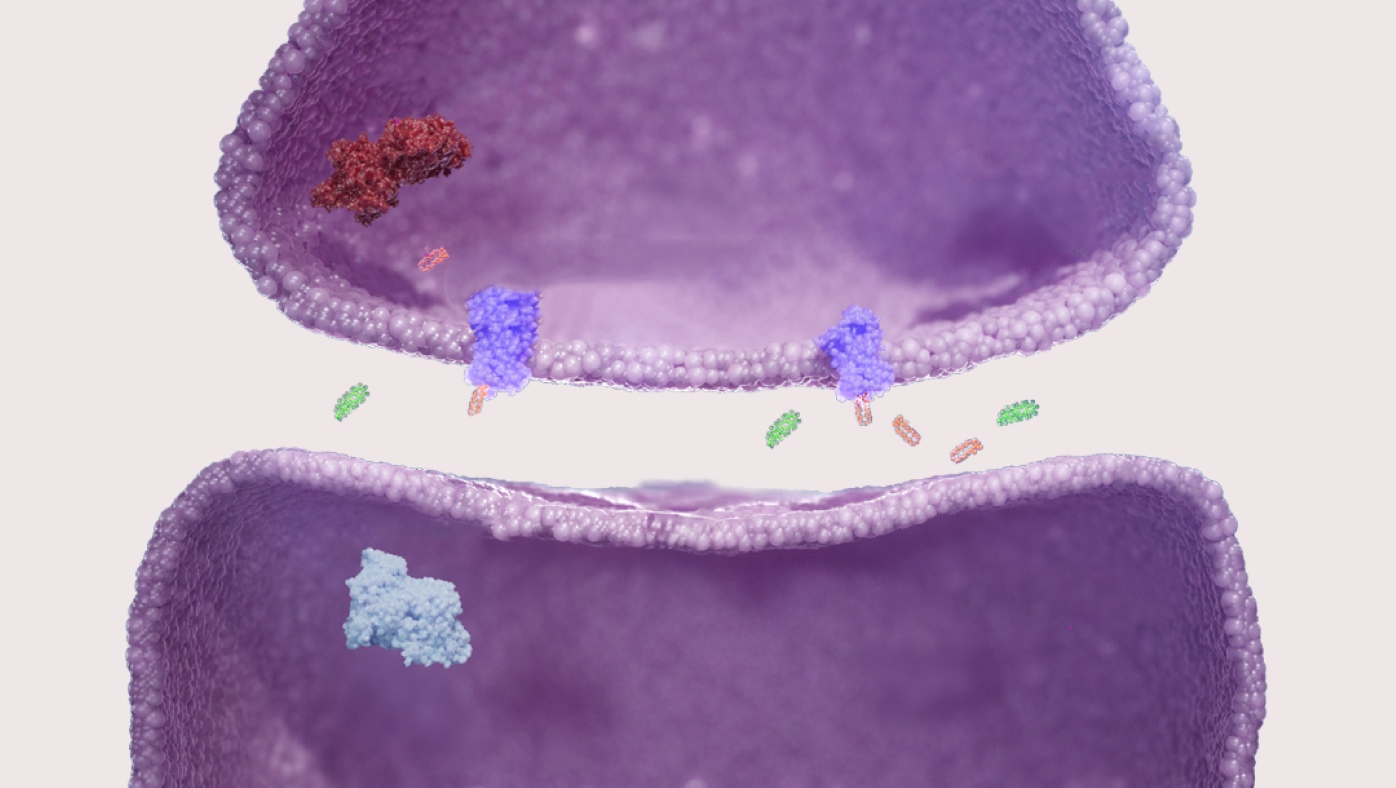Reduced levels of endocannabinoids result in higher-than-normal levels of neurotransmission causing neuronal hyperexcitability. Neuronal hyperexcitability is observed in many neurological conditions, including Alzheimer’s disease agitation and multiple sclerosis spasticity.7-9
The brain is a highly complex organ, and close regulation of signaling pathways is essential for healthy function.
Endocannabinoids are important signaling molecules within the brain that help regulate neurotransmission, altering communication between neurons and keeping it at healthy levels. They also play a role in reducing inflammation in the brain and spinal cord, known as neuroinflammation.1-3
Fatty acid amide hydrolase (FAAH) and monoacylglycerol lipase (MAGL) are enzymes within cells in the central nervous system that break down the two main components of the endocannabinoid system. Normally, FAAH and MAGL maintain the right balance of endocannabinoids and their respective signaling within the brain.4-6
Excess neurotransmission in neurological diseases
Research implications
Researchers are investigating ways to increase brain endocannabinoids to restore them to normal levels. This may reduce neuronal hyperexcitability and possibly protect brain cells from the harmful effects of neuroinflammation.
One method to achieve this may be to inhibit the enzymatic activity of FAAH and MAGL. Research suggests inhibiting both of these enzymes reduces the breakdown of endocannabinoids, facilitating signaling via their receptors and controlling neuronal hyperexcitability. This modulation of the endogenous endocannabinoid system could improve functional outcomes associated with multiple neurological conditions.
In addition, inhibiting FAAH and MAGL may also reduce neuroinflammation, thus contributing to neuroprotection.10,11
Bristol Myers Squibb is committed to rapidly advancing an innovative and diverse pipeline in neuroscience. With a deep focus on causal human biology, we are researching key pathways to slow or stop disease progression and treat symptoms to achieve the greatest possible outcomes for patients.
References
- Lu HC, Mackie K. An Introduction to the Endogenous Cannabinoid System. Biol Psychiatry. 2016;79(7):516-525.
- Murillo-Rodríguez E. The role of the CB1 receptor in the regulation of sleep. Prog Neuropsychopharmacol Biol Psychiatry. 2008;32(6):1420-1427.
- Castillo PE, Younts TJ, Chávez AE, Hashimotodani Y. Endocannabinoid signaling and synaptic function. Neuron. 2012;76(1):70-81.
- Zimmermann T, Bartsch JC, Beer A, et al. Impaired anandamide/palmitoylethanolamide signaling in hippocampal glutamatergic neurons alters synaptic plasticity, learning, and emotional responses. Neuropsychopharmacology. 2019;44(8):1377-1388.
- Zhu Y, Zhang H, Mao H, et al. FAAH served a key membrane-anchoring and stabilizing role for NLRP3 protein independently of the endocannabinoid system. Cell Death Differ. 2023;30(1):168-183.
- Murataeva N, Straiker A, Mackie K. Parsing the players: 2-arachidonoylglycerol synthesis and degradation in the CNS. Br J Pharmacol. 2014;171(6):1379-1391.
- Kasatkina LA, Rittchen S, Sturm EM. Neuroprotective and Immunomodulatory Action of the Endocannabinoid System under Neuroinflammation. Int J Mol Sci. 2021;22(11):5431.
- Sánchez-Sanz A, Posada-Ayala M, Sabín-Muñoz J, et al. Endocannabinoid levels in peripheral blood mononuclear cells of multiple sclerosis patients treated with dimethyl fumarate. Sci Rep. 2022;12(1):20300.
- Li S, Huang Y, Yu L, Ji X, Wu J. Impact of the Cannabinoid System in Alzheimer’s Disease. Curr Neuropharmacol. 2023;21(3):715-726.
- NCT06411730. https://clinicaltrials.gov/study/NCT06411730?tab=history. Accessed September 2024.
- Lutz B. Neurobiology of cannabinoid receptor signaling. Dialogues Clin Neurosci. 2020 Sep;22(3):207-222.
